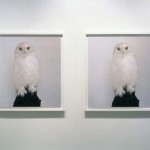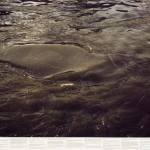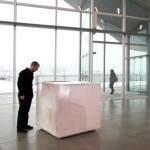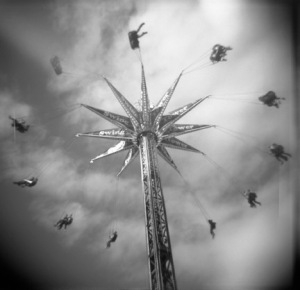Artists El Anatsui and Chihuli Bring Glass, Wood, Color, Imagination to Life
After a week of torrential rains, my friend E and I felt a huge need for light and color–so took in two excellent retrospective art exhibits: Dale Chihuli’s Through the Looking Glass at the Boston Museum of Fine Arts and El Anatsui‘s When I Last Wrote to You about Africa at Wellesley College’s Davis Museum, in Wellesley, MA.
 Through the Looking Glass is a 40-year retrospective of the Washington State artist’s blown glass sculptures–such as a boat containing thousands of glass flowers, fantastical forests, sculptures based on South American basketry–which took us out of our doldrums and got our imaginations flowing and reminded us that we can each create worlds of our own.
Through the Looking Glass is a 40-year retrospective of the Washington State artist’s blown glass sculptures–such as a boat containing thousands of glass flowers, fantastical forests, sculptures based on South American basketry–which took us out of our doldrums and got our imaginations flowing and reminded us that we can each create worlds of our own.

 In When I Last Wrote to You about Africa , the West African artist El Anatsui transformed mundane materials into forms and objects that were beautiful and real.
In When I Last Wrote to You about Africa , the West African artist El Anatsui transformed mundane materials into forms and objects that were beautiful and real.
Surveying nearly five decades of the West African artist’s internationally renowned career, the exhibit featured some sixty works in wood, metal ceramic, painting, print and drawing. E and I especially loved the gorgeous tapestry created from used wine-bottle caps and labels; wooden sculpture made from open boxes meant to remind viewers of the opening of market stalls and paintings of African colors, shapes. More difficult and disturbing was a stone-carved head–with traditional face but open in back to reveal not much in the brain.
An additional highlight was an exhibit of fashions designed by Wellesley students–meant to interpret the show. I particularly liked one showing a long, flowing fancy dress which, on closer glance, turned made of a black garbage bag, with collar and ruffle resembling feathers–but made from cut up magazines–all commenting on the ephemeral nature, I believe, of show business careers. E was partial to a dress with a bodice composed of typewriter keys…reflecting El Anatsu’si use of everyday objects in creating new ones.
Apologies for waiting so long to see/write about this one–(it closed on June 26) but E says the ICA has acquired one of the works; that will definitely be worth seeing, there.
Chihuly/ Through the Looking Glass will be at the Museum of Fine Arts, Boston, through August 7, 2011.
Anita M. Harris
Anita M. Harris is a journalist, photographer and President of the Harris Communications Group of Cambridge, MA.
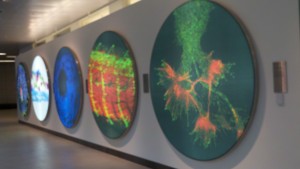
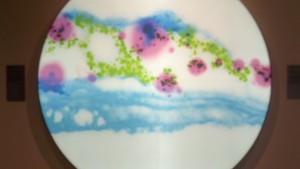
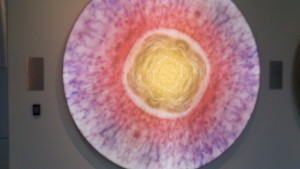
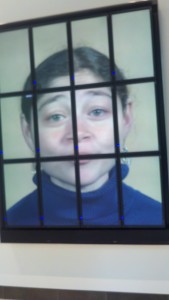
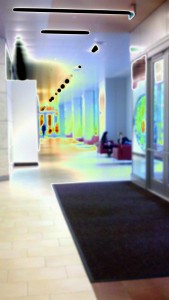
 DeDray makes small items–men’s clothing, thousands of tiny ceramic pots, sculptures in stitched fabric, carved bone, and wheel-thrown clay. As ICA materials point out, the smaller-than-life formal suits, embroidered patches, ties, and hats, as well as scaled-down chests of drawers, doors, and unique, thimble-sized vessels–and even facsimiles of used clothing stores complete with dust, make the viewer feel large and encourage thought about the content of the constructions. For example the coat in the photo to the left encompasses all sorts of other clothing–bras, pants, tops–making the point that individuals are composites of their experiences and other people.
DeDray makes small items–men’s clothing, thousands of tiny ceramic pots, sculptures in stitched fabric, carved bone, and wheel-thrown clay. As ICA materials point out, the smaller-than-life formal suits, embroidered patches, ties, and hats, as well as scaled-down chests of drawers, doors, and unique, thimble-sized vessels–and even facsimiles of used clothing stores complete with dust, make the viewer feel large and encourage thought about the content of the constructions. For example the coat in the photo to the left encompasses all sorts of other clothing–bras, pants, tops–making the point that individuals are composites of their experiences and other people.
 At the DeCordova, Drew’s show, “Existed” highlights “the cyclical nature of creation, decay, and regeneration through a selection of large-scale sculptures, installations, and works on paper.
At the DeCordova, Drew’s show, “Existed” highlights “the cyclical nature of creation, decay, and regeneration through a selection of large-scale sculptures, installations, and works on paper.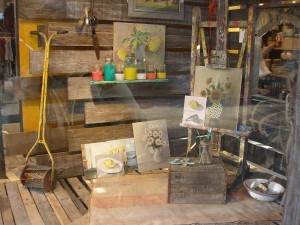
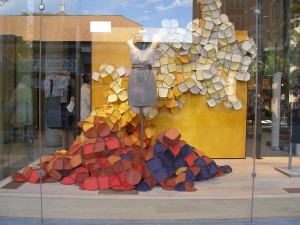
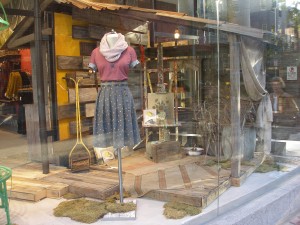
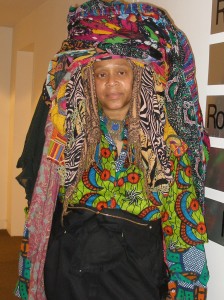
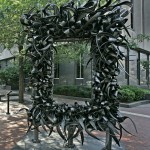
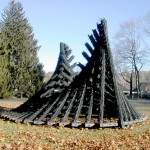
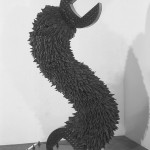
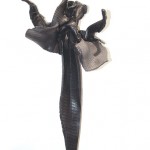
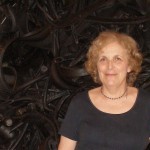
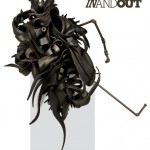
 At Boston’s
At Boston’s 
